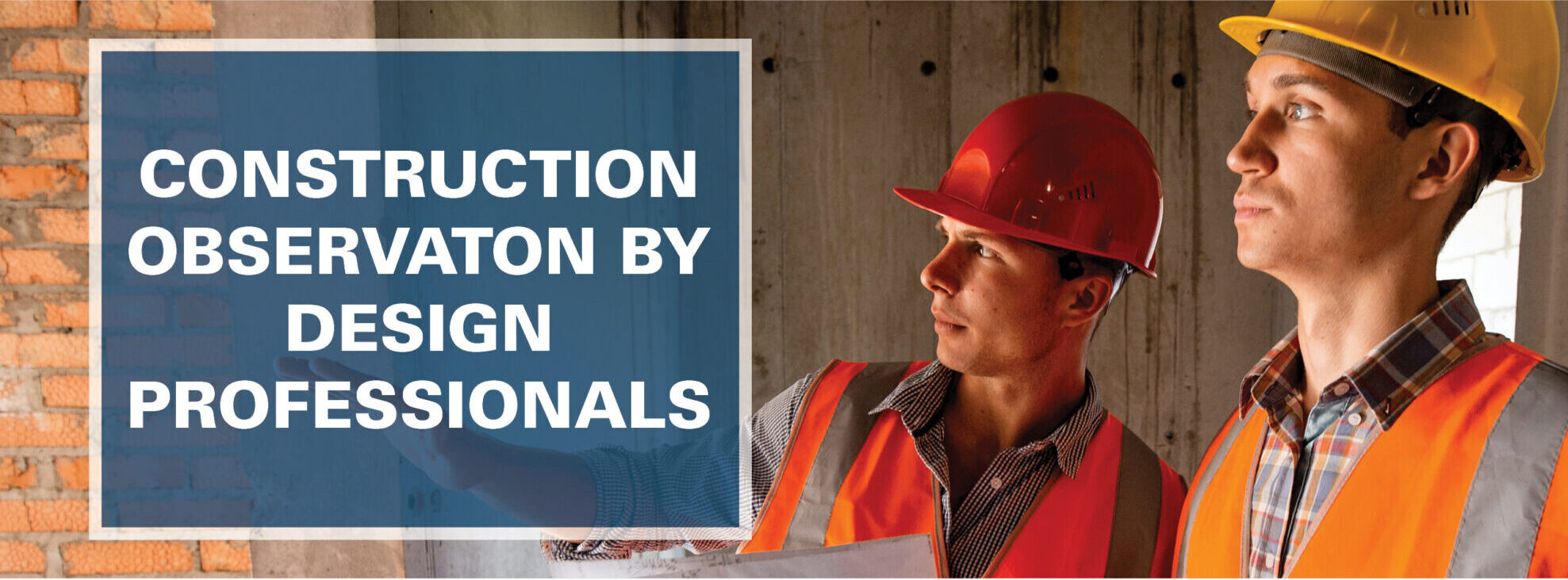
You are about to embark on a construction project or repair and the scope of work is extensive. You’ve had to hire design professionals to develop plans and specifications. After several months of waiting, you’ve receive the approved construction documents and permits. Seemingly, now all that’s left to do is hand them off to the contractor. The engineers and architect have finished their jobs and the rest is up to the contractor, right? Well, not completely.
When a design professional develops construction documents, the Department of Commerce and Consumer Affairs (DCCA) requires that the design professional perform “observation” of the construction. This DCCA requirement can be seen just below the architect or engineers stamp on the plans where it will read “THIS WORK WAS PREPARED BY ME OR UNDER MY SUPERVISION AND CONSTRUCTION OF THIS PROJECT WILL BE UNDER MY OBSERVATION”. The requirement for observation by the design professional has good credence and is based on section 1702 of both the UBC and IBC building codes. Numerous studies completed after major earthquakes and hurricanes have shown that contractors commonly omit or incorrectly install building components (whether intentionally or unintentionally) that were intended to provide structural support during these episodes. This problem became a major issue after the 1994 Northridge earthquake in California where it was estimated that in over 40 percent of buildings had flawed components due to contractors. (Schierle, 1993, 1996) It was also estimated by the Los Angeles Times that at least one third of the earthquake failures could be attributed to flawed construction (April 21, 1994). Unfortunately this trend continues and was documented after Hurricane Katrina as well as after the Big Island earthquake last year.
Typical in Kona following the earthquake were failures in small masonry buildings and masonry building components. The commonality in all of these failures was masonry construction with steel reinforcing where the reinforcing was not grouted. If the design professional had observed any of these projects during construction it would have been an easy deficiency to resolve. Unfortunately, repairing earthquake damage due to these construction defects has been very costly for building owners on the Big Island.
In fairness, it would be inappropriate to simply place fault solely on contractor for these flaws. Contractors have the unenviable job of coordinating multiple trades and subcontractors while simultaneously trying to please the owner and still make a living. With the huge coordination responsibility placed on the contractors, the observation programs were started to help improve quality by having design professionals periodically visit the job site. The design professional brings a different approach to observations than the contractor and the combination of the two provide efficient and comprehensive observations leading to better project quality.
A successful project requires engaging the services of a quality oriented contractor, but even with a good contractor, mistakes can happen. If errors are made installing components designed to help support the building during an earthquake or hurricane it may be years before the mistake is discovered and damage occurs. Repairing the damage is always substantially more expensive than installing the components correctly the first time. Many times these observations are forgotten, especially on smaller projects or repairs. But the same problems that occur on large projects are just as likely to happen on the smaller ones. Common reasons include the design professional being “to busy” to visit the site or the contractor “neglecting to notify” the design professional. To prevent this, owners should ask for documentation that these observations have been completed.
In the end, the combination of a good contractor working in partnership with the design professionals will give the owner assurance that a quality project will be the final result. However, even with the best observation, choosing a good design professional and contractor is always the best way to achieve a quality project.

CATEGORY: Construction Observation, Construction Administration
